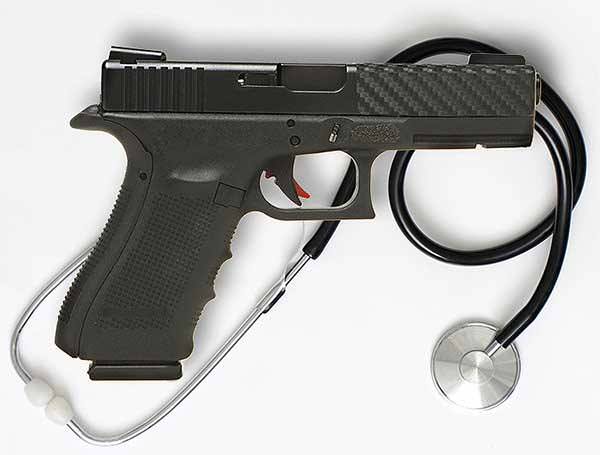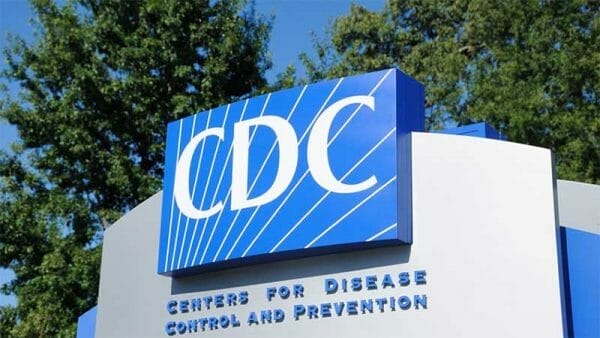Opinion

New Jersey – -(AmmoLand.com)- I’ve had the opportunity to read through two Freedom of Information Act (FIOA) acquired document dumps from the Centers for Disease Control and Prevention (CDC), amounting to 529 pages of information (20-00859-FOIA and 20-01880-FOIA), and I am not impressed at all.
In the age of transparency and citizens’ rights to information, I need to point out the CDC’s excessive use of what I call the “government highlighter”, aka a black magic marker. 213 pages of one document were fully redacted and the other FIOA had 12 pages fully redacted and included a fluffy 100+ page report that is readily available to the public.
Interestingly enough, among the redacted material were sections of an article that is also readily available to the public and is linked in this article in full for reading.
In one of the CDC’s replies they state the following:
After a careful review of these pages, some information was withheld from release pursuant to 5 U.S.C. §552 Exemption 5 and 6.
Also from their replies, we received an explanation of what this exactly means:
Exemption 5 protects inter-agency or intra-agency memorandums or letters that would not be available by law to a party other than an agency in litigation with the agency. Exemption 5 therefore incorporates the privileges that protect materials from discovery in litigation, including the deliberative process, attorney work-product, and attorney-client privileges. Information withheld under this exemption was protected under the deliberative process privilege. The deliberative process privilege protects the decision-making process of government agencies. The deliberative process privilege protects materials that are both predecisional and deliberative. The materials that have been withheld under the deliberative process privilege of Exemption 5 are both predecisional and deliberative and do not contain or represent formal or informal agency policies or decisions. Examples of information withheld include drafts.
Exemption 6 protects information in personnel and medical files and similar files when disclosure would constitute a clearly unwarranted invasion of personal privacy. The information that has been withheld under Exemption 6 consists of personal information, such as personal email addresses. We have determined that the individual(s) to whom this information pertains has a substantial privacy interest in withholding it.
The process of obtaining documents from governmental agencies via the Freedom of Information Act is a delicate minuet, requiring proper wording and taking care to not ask for too broad search terms.
After looking through these two specific documents, we can be left wondering “What is the CDC hiding?”

In our new 21st Century of executive overreach through governmental agencies, this should worry everyone. Need we discuss what the ATF has been up to as of late? We need to buckle up for other agencies and entities continuing assaults on our freedoms.
The kernel of 20-00859-FOIA can be summed up very well via a statement made by Dr. Chesley Richards, the CDC Deputy Director for Public Health Science and Surveillance (DDPHSS):
…I am trying to change the mindest in CSELS [Center for Surveillance, Epidemiology, and Laboratory Services] toward being able to do analytics and offer some value to programs.
What exactly is the good doctor referring to? I can only speculate given the documents included in his correspondence. One document, “Linking Information for Nonfatal Crash Surveillance” deals heavily with how states collect data on car crashes and the report said information. They outline closely techniques and technologies to data-mine information. The focus is strictly on how STATES report this information, and that is important given the next document included in the FOIA.
The latter of the two documents is an article entitled “Emergency Department Visits For Firearm-Related Injuries in The United States, 2006-14.” This article is a flawed look into data involving firearm-related deaths and injuries. What makes it flawed is that their scope does not include fatalities that occur prior to arrival at a hospital, which would negate 80% + or – of the suicide attempts via firearm, which account for nearly 2/3rds of all deaths due to firearms (a whole other subject that has and will be further explored). Given the deck being stacked the way it is, the conclusions are somewhat flawed, as a big chunk of the statistics are being ignored to push a different agenda.
There was three takeaways from the “Emergency Department Visits For Firearm-Related Injuries in The United States, 2006-14” article.
One, the financial burden is referenced over 11 times in the piece, with emphasis perhaps revolving around this quote:
For example, because uninsured or self-pay patients lack negotiating power and thus leverage with payers, either they bear the entire financial burden of their injuries in the form of out-of-pocket spending, or these costs remain unrecovered—thereby adding to the uncompensated care provided by hospitals, physicians, and health care systems.
The heavy emphasis on the financial repercussions of firearm-related injuries and the “….adding to the uncompensated care provided by hospitals, physicians, and health care systems” paint a very saccharine picture concerning the pocketbooks of the medical industry and their potential objectives. Who are these health care professionals looking after and in what capacity?
The second takeaway has to do with a political agenda being injected into the article, with this highly misleading quote:
More effective methods of reducing firearm-related injuries may involve limiting access to firearms for people with a history of violence, drug addicts, former convicts, children, and fugitives via the implementation of universal background checks for all firearm purchases regardless of location (for example, online or at a gun show). The concept of universal background checks has garnered significant approval from both people who own guns and those who do not, and a recent report suggests that 74 percent of members of the National Rifle Association are in favor of them. [the NRA does not release its membership rolls so this “recent report” has no idea who is or is not a true NRA member!?]
Perhaps the researchers that worked on this article were not aware that their list of persons that should not have firearms are already barred from firearm ownership/possession: people with a recorded history of violence, drug addicts, former convicts, children, and fugitives.
Somehow they claim that “universal background checks”, the magic antidote to so-called “gun violence” will keep firearms out of the hands of the disqualified. Sounds a lot like our current NICS system that they wholly neglect to discuss. The knee-jerk reaction is the mythical unicorn of the “universal background checks”…that we already have in place. But as AmmoLand New’s readers already know, they’re really trying to implement the building blocks of registration (a workaround to protections to our civil rights) and make it impossible to do things as simple as loan a firearm to a friend. We’re not even going to address the alleged 74% of NRA membership wishing for these background checks, do your own poll and ask gun owners about this.
And the third item of note revolves around receiving funding for research in this “field”, where they go on:
Although firearm-related injuries are a major public health concern with significant financial consequences, research in this area has been limited as a result of a lack of funding. For example, while gun violence is responsible for about as many deaths as sepsis is, funding for gun violence research is equivalent to 0.7 percent of the funding allocated for sepsis, and for every hundred articles published on sepsis, only about four are published on gun violence. Historically, federal funding for gun violence research has been limited because of the Dickey Amendment of 1996, a provision in that year’s federal government omnibus spending bill stating that funds made available to the CDC for injury research cannot “be used to advocate or promote gun control.” Despite recent efforts to repeal this amendment, research funds for the study of firearm-related injuries have yet to be appropriated by Congress. Researchers, politicians, and government officials must work together to ensure that research funds are allocated to promote the understanding of the complex interplay between social, economic, and medical factors associated with firearm-related injuries. Only through the adoption of an evidence-based public health approach can the resulting substantial medical and financial burden be reduced.
The secret is simple, if the research will not lead to “gun control” then there is no problem. Further, if they were so altruistic about public health, would they be discussing at the closure of the quote the “….financial burden”?
So, this goes back to the big question, what is the CDC up to and what are they hiding? They’re interested in tracking firearm-related incidents in a similar fashion that auto crashes are tracked by states. Why offer guidance to introduce such tracking programs to state leadership? I think the implication is obvious given the cited article’s stance on funding to the CDC on so-called “gun violence.” If the CDC were so concerned with the scourge of “gun violence” they would team up with
Doctors for Responsible Gun Ownership or groups like Walk the Talk America, which addresses the leading cause of death due to firearms (suicide), instead of trying to manipulate the system to force more “gun control” (the same can be said for all the “gun grabbers” out there).
With these heavily redacted documents, it’s hard to look at what is being said, and we need to rely on what they are reading and sharing with another. From what I gather, they’re looking to remove the protections we have to our civil rights from the Dickey Amendment (no gun control funding) and Brady Bill (no gun registration), and or come with a suitable workaround by pressuring states to do their dirty work in the form of “gun violence” research.
We’ll just have to see…I’m willing to wager there will be some executive overreach involved as time marches on.
John Petrolino is a US Merchant Marine Officer, writer, author of Decoding Firearms: An Easy to Read Guide on General Gun Safety & Use and NRA certified pistol, rifle, and shotgun instructor living under and working to change New Jersey's draconian and unconstitutional gun laws. You can find him on the web at www.johnpetrolino.com on twitter at @johnpetrolino and on instagram @jpetrolinoiii .

The post The CDC & Their Government Highlighter, What are They Hiding? appeared first on AmmoLand.com.
from https://ift.tt/2LZG4ip
via IFTTT

No comments:
Post a Comment